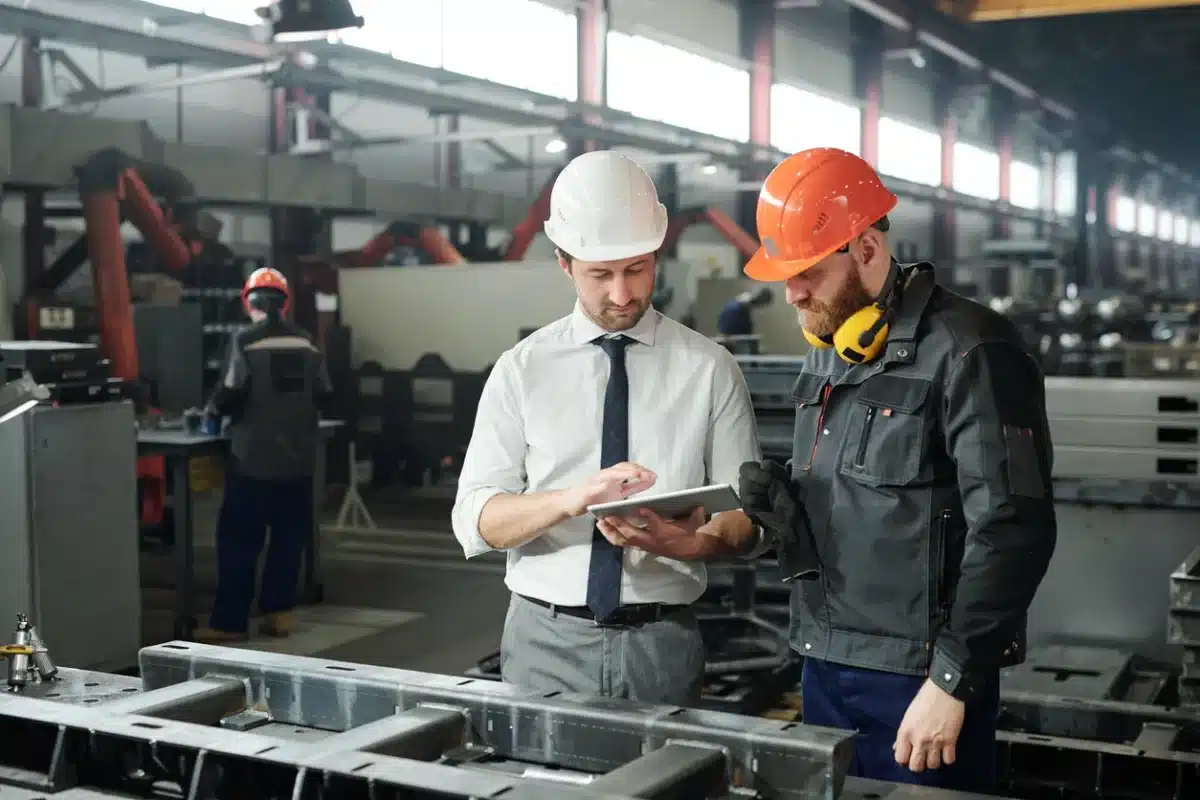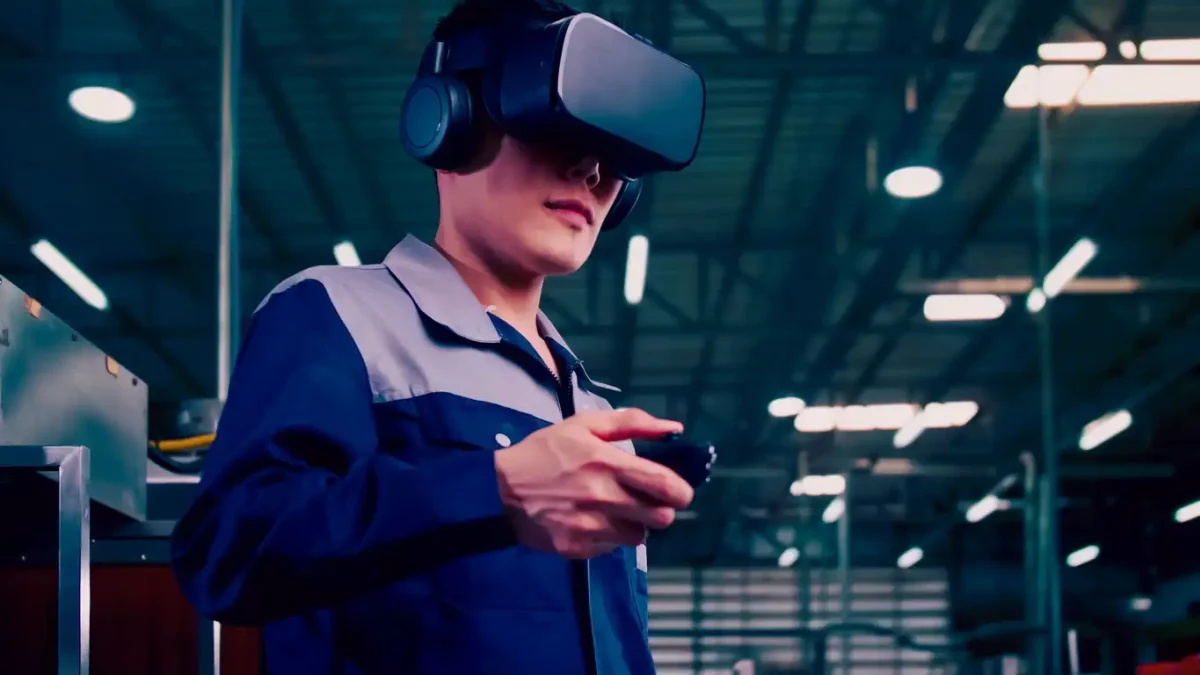How do you get from here to 4.0? With the newest MESA model from Manufacturing Enterprise Solutions Association (MESA) International, industry stakeholders, including manufacturers, producers, leaders, and solution providers, have a new framework to better categorize the manufacturing processes and technologies that drive operational excellence. Because MESA designed the framework specifically for the Industrial Internet of Things (IIoT) and smart manufacturing, they hope manufacturers can use it for the next decade to accurately define and develop the industry’s current and future landscape.
Before learning about the new model, let’s look at the people who made it.
What is Manufacturing Enterprise Solutions Association (MESA) International?
MESA is a global non-profit organization that supports the manufacturing industry with opportunities for education, networking, and sharing. The collective goal is to improve operations management capabilities by implementing information technologies (IT), IIOT- and cloud-based solutions, and industry best practices.
MESA helps members:
- Cultivate understanding and share strategies for operations excellence
- Publish best practices to improve productivity and profitability
- Educate the marketplace through a global education program
Since 1996, MESA International has released four models: MESA-11, CMES, Strategic Initiatives Model, and the current 2022 Smart Manufacturing model.
What is the latest MESA model?
The MESA Model: A Framework for Smarter Manufacturing involves three inter- and intra-connected concepts: life cycles, cross-lifecycle threads, and enabling technologies. MESA has them positioned from left to right in the model because that’s the order to consider each one. You start with a business objective, look at the related life cycles, add threads, and then implement the right technologies to achieve the desired outcome.
Although the model is modern, many elements have always been a part of manufacturing. For example, even the first organized efforts to mass-produce stone wheels must have included considerations for the supply chain and workforce. They needed to figure out where they would source the stones and who would chisel them into wheels. What makes the model special is that it focuses on how to make these long-standing elements “smart” by incorporating new functions and technologies.
What’s the definition of smart manufacturing? According to the Canadian Manufacturers & Exporters (CM&E), it’s “the tangible net outcome and the result of the Industry 4.0 strategy driven through IoT capable connected devices… These outcomes combine to optimize your manufacturing process, assist you in running your business more efficiently, and help you better understand your long-term opportunities.”
Smart manufacturing delivers more operating efficiency, less unscheduled downtime, increased worker safety, and improved inventory and supply chain management.
MESA life cycles
Here, life cycles are the processes and value streams manufacturers want to optimize through connectivity and transparency.
Life cycles in the model include:
- Production
- Production asset
- Product
- Supply chain
- Workforce
- Order-to-cash
MESA chose to use “production” instead of “manufacturing” to ensure they included the continuous processes industries. Production assets cover the machines used in the production line. Product is what the companies produce, while supply chain, workforce, and order-to-cash demand careful management.
Traditionally, the basic life cycle runs from concept to development, production to utilization, and then support to retirement. In the model, though, the temporal relationships between these steps are less linear. For example, utilization can lead to refinement in development. Production can come both before and after the concept step.
MESA cross-life cycle threads
Cross-life cycle threads tie life cycle treads together. Each thread works across two or more life cycles to help you reach a specific goal. So, you might have the quality thread connecting supply chain management, production, production assets, and workforce. To achieve your quality goals, you need to have the right materials, produce the right products with the right assets and equipment for your production lines, where a properly trained and monitored workforce operates everything.
Cross-life cycle threads include:
- Quality
- Compliance
- Energy
- Analytics
- Security
- Digital twin/thread
- Modeling/simulation
How do you know you have the right threads implemented? Your life cycles shouldn’t be independent. They should be part of a cohesive system.
Enabling technologies
The third part of the model covers innovations, including cutting-edge technologies for maintenance management that make smart manufacturing possible.
In the MESA model, enabling technologies include:
- IIoT
- Big data
- Artificial intelligence/machine learning
- Virtual reality/augmented reality
- Blockchain
- Additive
- Robotics
- Wireless
Enterprise asset management (EAM) solutions are also on the list. With the right asset management solution, you can leverage data into actionable business intelligence.
According to a MESA presentation on its model framework, many of these technologies are already common in other industries and the consumer market. For example, artificial intelligence and blockchain are already popular outside of manufacturing. It’s not that the technologies are new; it’s their application in manufacturing that’s relatively novel.
What are the benefits of the MESA model?
The MESA model helps remind stakeholders in the manufacturing space that they need to approach new technologies as solutions to well-defined business goals.
Tech has no intrinsic value. Instead, you can implement technologies to optimize existing life cycles and cross-life cycle threads. How does the model make these concepts clear? First, you always start with your goals when working with the model. Second, the model refers to “enabling” technologies. They’re there to give you the ability to reach your goals.
The model also helps draw the manufacturing community together by acting as an industry-wide concept, terminology, and set of definitions. Professionals across roles can more easily communicate with one another when they have the model as a shared language. And because MESA is a non-profit, you can volunteer time and expertise to the project, creating opportunities for networking and professional development.
Summary
MESA, an industry non-profit focused on helping the manufacturing industry through sharing best practices and networking, has a new model for smart manufacturing that helps industry stakeholders understand the processes and technologies that drive operational excellence. The first part contains long-standing life cycles, including supply chain and workforce management.
Next, you use the model to examine the cross-life cycle threads that connect two or more life cycles. For example, if you want to meet a certain level of product quality, you need to connect the supply chain, production assets and equipment, and the workforce.
Finally, the model covers enabling technologies, including IIOT, artificial intelligence, and cloud-based EAM solutions. Working with the model allows you to optimize your processes to achieve specific business goals. The model helps create a shared industry-specific language, making it easier to communicate across roles.



